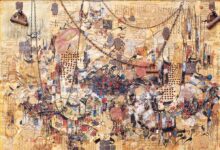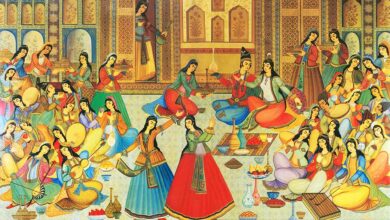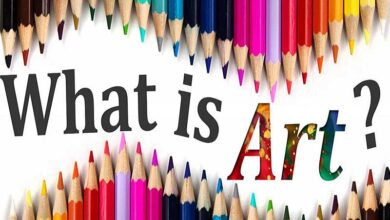Art marketing, adaptive perspective of art as an economic activity

Behdad Najafi Asadollahi: Considering the special and high position of art in human life and considering the special spiritual value and respect that human societies have for artists, purely economic and managerial studies of art and artistic activities with business and commercial approaches. It has always been criticized, both positively and negatively, and has been the subject of discussion among artists and thinkers in various fields of the humanities.
Since in today’s world, the success of all for-profit and non-profit activities such as business, cultural, educational and even charitable and humanitarian events requires the use of marketing and communication science, art should not be excluded from this framework.
An artist or supplier of works of art and products, in order to achieve success and improve their position in the art market, by applying the principles of marketing and communication science and adapting their activities to this process, the probability of achieving their short and long term goals is significantly increased. In this regard, it should be noted that while the general principles of marketing and communication science are the same for all goods and services offered in human societies, but each of these goods and services with their own strategies and executive plans based on these principles designed and Have been developed, operate in the market.
Communication with the customer and the audience plays an essential and significant role in art marketing, which is less seen in other artistic activities. The focus of art marketing is on providing customer satisfaction and value in a profitable way. Several definitions can be given for this process; However, according to the objectives of this article in the field of art and in a comprehensive and concise format, it can be said: Art marketing is the study and management of relationships governing the trade of works of art and products. In terms of implementation, this process includes a set of activities performed by creators of works and suppliers of art products (artist, collector, gallery, etc.) to increase the trade of those works and products.
Art marketing pursues two main goals:
A: Attracting new customers by offering works of art and products that bring more value to customers and increase their satisfaction.
B: Retaining current customers by providing and retaining and trying to increase their satisfaction.
Art marketing, like the marketing of a variety of commercial goods and services, encompasses a variety of activities such as market research, customer and consumer behavior study, marketing communications such as advertising and public relations, sales, distribution, and after-sales service.
In general, it can be said that in today’s art world, no artist or art organization, whether for-profit or non-profit, can survive in any dimension without healthy marketing.
It should be noted that since the phenomenon of marketing and its effect is seen in many daily activities of today’s societies, the majority of people in the society have more or less information in this field. The majority of people consider marketing to mean selling and advertising. While sales and advertising are only part of it. The old concept of marketing was to introduce the product and sell it, while the new concept has three basic points in mind:
– Meeting the needs or desires of the customer and responding to his request
– Increase customer satisfaction and value creation
– Earn profit
The supplier of works of art and products who have a correct understanding of the market space and customer needs and offer valuable works and products to the target market with appropriate pricing and marketing methods will surely create a favorable position in the art market.

Art marketing can be considered as a social and managerial process by which artists and suppliers of art products are able to make a profit and work to achieve predetermined goals by supplying and responding to customer demand and creating value for them. We now turn to the most important activities and terms of this process.
Marketing strategies, policies and tactics
(Marketing Strategy, Policy & Tactics)
Art marketing strategy can be considered as the overall performance in the supply of works of art and products, to connect with the target market and turn them into actual customers. This strategy determines how to achieve short and long term marketing goals and how to move to achieve the desired position in the art market. It also determines the orientation strategy and generalities of the marketing plan, and its time frame should usually be considered long-term.
Art marketing strategy is usually implemented with medium and short term time plans. This means that an art marketing strategy can be developed and approved for a 5-year period and determine the framework of different and consecutive annual and seasonal marketing programs in this 5-year period. It should be noted that based on the feedback from the implementation of marketing programs and the constant and inevitable changes in market conditions, strategies are also subject to change and modification.
Art marketing policies refer to a set of guidelines that are formulated in line with the main strategy for managing the relevant current and daily affairs. Art marketing policies define frameworks, constraints, and priorities in the executive decision-making process. These policies, by reflecting the values and culture of artists and suppliers of art products, also determine the direction of their professional behavior.
Artistic marketing tactics are executive and 100% operational and are said to be actions that are performed continuously and on a regular schedule and in line with the marketing strategy and achieving its goals. These tactics include sending daily Instagram posts in cyberspace, installing exhibition posters in the form of advertising campaigns, inserting art news regularly in the media, sending emails to customers, and so on.
A noteworthy point in comparing strategy and tactics is their sensitivity to time and technology. Strategy is usually less sensitive to time and technology than tactics; for example, many sales growth strategies are very old in most businesses and have not changed over time with the advent of new technologies; But the tactics used in these strategies have changed steadily over time and with the use of emerging technologies. Examples include the evolution of direct marketing and its changing tactics from sending promotional emails to faxes and, in the digital age, promotional emails.
The effectiveness of time marketing tactics, in addition to the advancement of technology over time, is also related to changes in human societies in the fields of economics, consumer behavior, cultural and social factors, moral norms and values that govern it.
Art Marketing Plan
An art marketing plan is an executive plan that outlines activities, budgets, and executive schedules to achieve predetermined goals. The program is based on an art marketing strategy and includes related policies and tactics. The marketing plan is part of the Art Business Plan and determines how the available financial and non-financial resources are allocated to the various activities.
The overall goal of an art marketing program is to get the largest share of the total art market demand for works of art, compared to other suppliers of similar or alternative products.
It should be noted that efforts to increase market share must continue to the extent that audience satisfaction and profitability are always maintained.
At present, marketing program of most professional artists and suppliers of art products such as galleries, auctions, art exhibitions, etc. in the world, is developed and implemented in the form of an annual general program that is divided into four seasonal programs.
Obviously, in order to make an economic profit that guarantees the continuity of artistic activities, it is necessary to plan and execute sales and marketing activities in accordance with the above, as well as other commercial goods and services for works of art and products with its specific strategies. . In addition to selling works and works of art in the short term, it is necessary to create a suitable position in the market and the art community and to promote the mental position of the brand of artists and suppliers of art products and plan for it.











